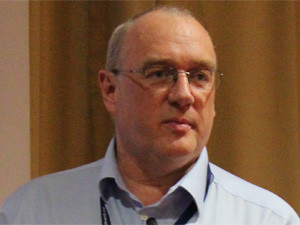
How can businesses' IT teams get the disparate data centre players to play the same tune?
This is the question Clive Longbottom, service director for research and analysis firm Quocirca, posed to a forum at a NetEvents cloud spotlight debate this week.
"The pressures of social networking, mobility, big data and cloud services mean the IT department's role is shifting from infrastructure and application provisioning to becoming a business growth driver.
"The need is for a more flexible and adaptable data centre, where servers can be provisioned as dynamic workloads shift and change - where systems can be configured, replicated and deployed across the enterprise."
Longbottom proposes the way to a data centre's heart is to identify the impetus behind the need. "Who is the conductor? Is it the chief information officer, chief operations officer, chief executive officer - even the chief financial officer - or the end-user? All of them together perhaps?"
Gartner VP Ian Keene reckons the user will develop - "if allowed" - within cloud services. "The user will have a say and I think all the others should have a role, because it's a matter of developing the business. Data centres used to clunk along before cloud, and the high cost of maintaining them has been a drain."
Mike Banic, VP of marketing at HP, says the dynamic is going to change. "Even the chief marketing officer is pivotal nowadays, when it comes to mining of big data. This is someone with a deep budget, who is often in a position to drive the decisions and steer them."
Banic says he believes, ultimately, the chief information officer will "return to a pivotal position" in this regard. "HP has this point of view. [In a recent survey] we found the majority of enterprises expect to have hybrid implementation by 2016, and most enterprises are seeing a need for more consistency - and the CIO will be tasked with driving this.
"The need is for a more flexible and adaptable data centre, where servers can be provisioned as dynamic workloads shift and change; where systems can be configured, replicated and deployed across the enterprise."
The greatest level of traction, says Banic, is seen when the parties involved with the data centre chain are self-aware. "When it comes to motion equating to progress, people need to know where they are and how they got there. Perhaps decisions made in the past have not been perfect, but to know where you are and how you got there is important."
Share